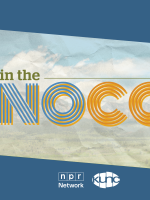Fifty years ago, in June of 1974, a small group of friends and activists from the gay and lesbian community gathered in Denver's Cheesman Park to be together and celebrate their identity. It was the first iteration of what's now known as Denver PrideFest.

“The organization that sponsored it was the Gay Coalition of Denver, which [in 1973] had already had some successes in getting some laws overturned that oppressed LGBT people,” said author and longtime activist Phil Nash, who writes about it in his new history book LGBTQ Denver.
The event has evolved over the years from its modest beginnings, growing during good times but also during times of adversity and challenge for the LGBTQ community in Colorado – including the AIDS crisis in the 1980s and the state’s adoption of Amendment 2 in 1992, which essentially made it legal to discriminate on the basis of sexual orientation.
“It was a very, very dark time,” Nash said, “but what I would say about that is that it did not drive us back into the closet. It in fact, increased our resiliency and our resolve to move forward and strengthen ourselves so that these indignities would not happen again.”
PrideFest is now one of the largest Pride events in the country, typically drawing more than 500,000 people to Denver’s Civic Center Park for a vibrant celebration that includes live music, art installations, music, and a parade.
This weekend, Denver PrideFest celebrates its 50th year. To help us put those five decades into perspective, we spoke with Phil Nash about how the event continues to reflect Denver’s flourishing, resilient LGBTQ community and culture.
Find a schedule of events for Denver Pride’s 50th anniversary here.







